- DIRC@EIC design; 11 bars; 4x6 MCP-PMT array; 3-layer sperical lens with nlak33
- 3 mm pixels HIQ400, CE=95%
- 100 ps time precision
- pions/electrons @ 1 GeV/c @ [30-140] deg polar angle
- time imaging reconstruction with simulated PDFs (30k for each particle type)
- geometrical reconstruction with averaged LUT from 5M photons
- 0.5 mrad vs 2.2 mrad (edited: and 0.8 mrad) tracking resolution. See track resolution scan for more.
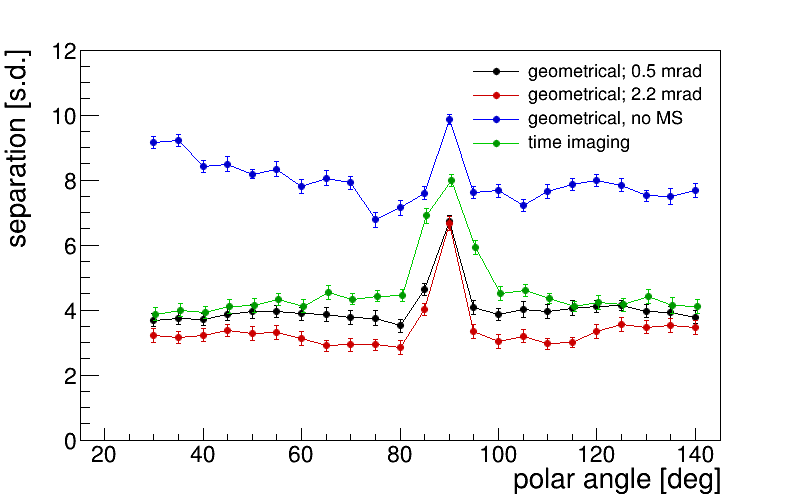
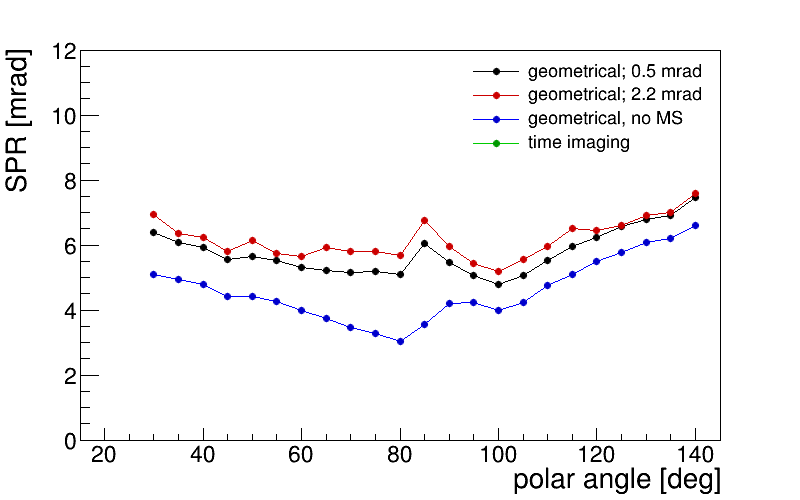
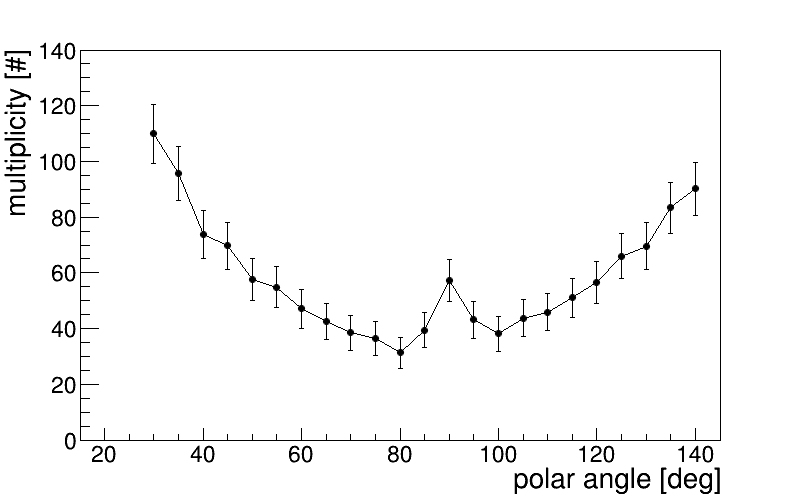
0.8 mrad:


Non Gaussian tails and fit range (e/pi @ 30 deg @ 1 GeV/c; 0.8 mrad tracking):
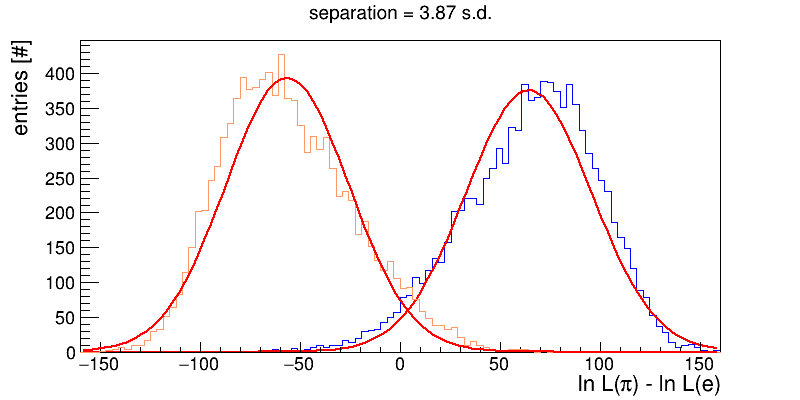
2 sigma cut-off of the fit range:
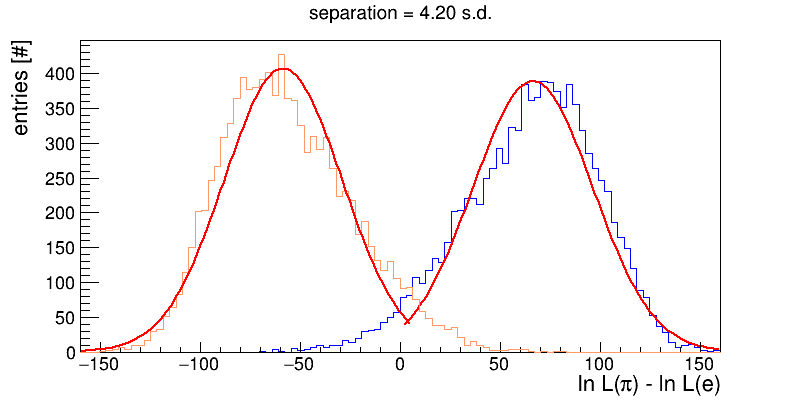
In the previous analysis the sigma of the expected Cherenkov angle distribution, which is used in the likelihood calculation, was set to the same value for all polar angles of the charged particle (~6 mrad). Using individual sigmas (obtained form the fits) improves performance (e/pi @ 1 GeV/c; 0.8 mrad tracking):
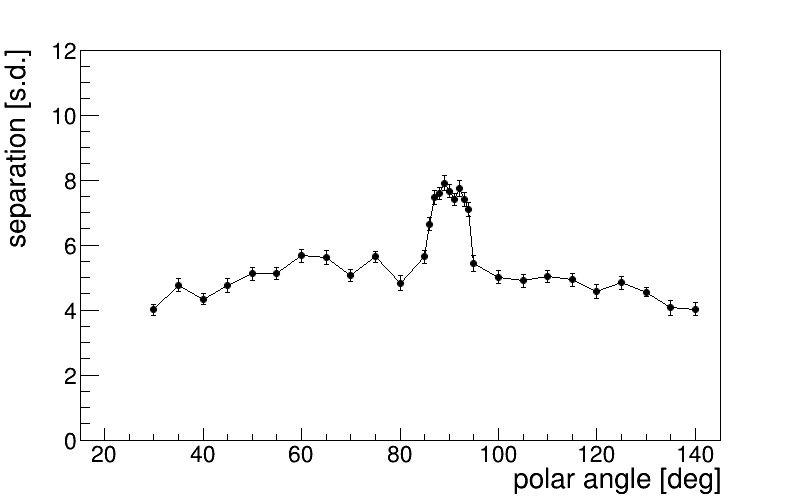
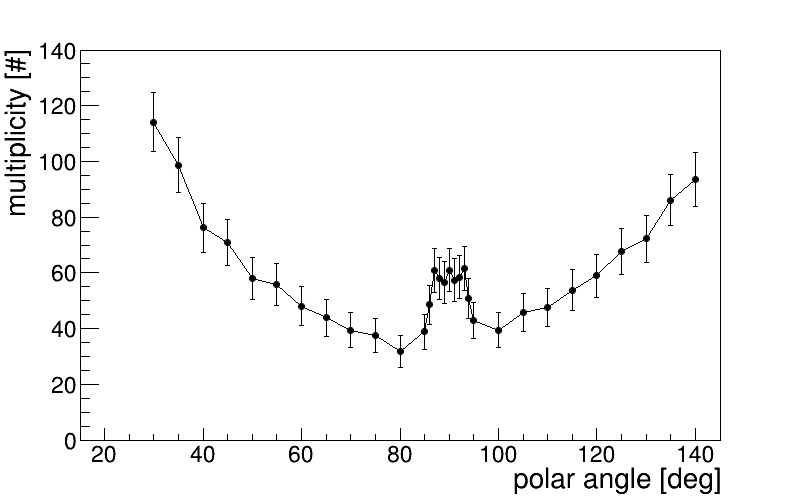
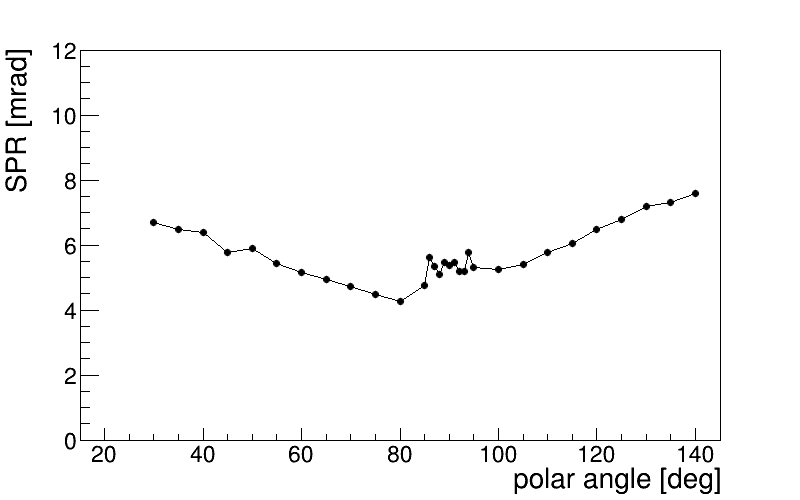
Analysis plots (e/pi @ 30 deg @ 1 GeV/c; 0.8 mrad tracking):
Comparison to the pi/K @ 3.5 GeV/c (Cherenkov angle difference is similar, 9.0 mrad (e/pi @ 1 GeV/c) vs 8.4 mrad (pi/K @ 3.5 GeV/c) ):



Polar angle scan for differen momenta (e/pi; 0.8 mrad tracking):



Momentum scan @ 30 deg (e/pi; 0.8 mrad tracking):
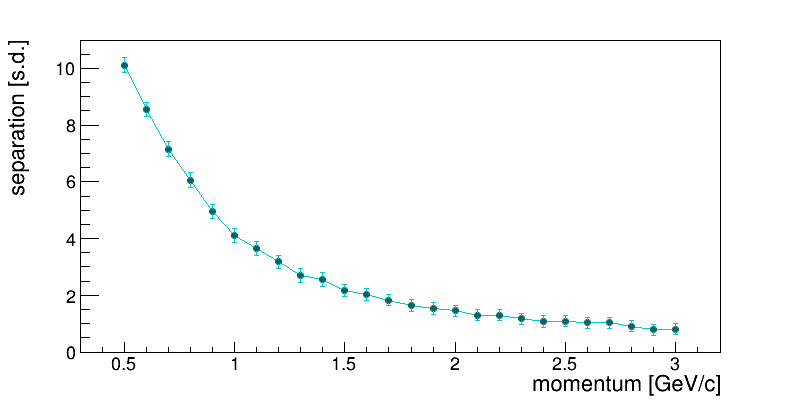
Bonus pictures (for scrolling till the end):
Artificially decreased photon yield around 90 deg has no significant effect on the separation power:


Performance using only direct or reflected photons:


If one consider them independent then we should expect doubled performance ~90 degree.